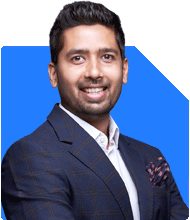Sir,
My daughter wishes to invest 10 L in MF. She wants to invest 5 L in Nifty index fund and remaining 2.5+2 5 in large cap and Or mid cap funds.
Kindly advise.
Thanks.
Ans: Let’s walk through an extended, 360-degree assessment of your daughter’s Rs 10 lakh investment plan, ensuring it covers all aspects of her financial goals and offers a detailed, holistic solution. This analysis will break down the potential of each asset class she’s considering, focusing on the pros and cons, and will suggest a diversified strategy for better returns.
Assessing the Current Investment Plan
Your daughter’s current plan to invest Rs 10 lakh into a combination of Nifty index funds, large-cap, and mid-cap funds is a good start. However, there are some areas where her strategy can be fine-tuned to maximize long-term growth while managing risks effectively.
Her plan divides the Rs 10 lakh investment into:
Rs 5 lakh in a Nifty Index Fund
Rs 2.5 lakh in a large-cap fund
Rs 2.5 lakh in a mid-cap fund
This distribution shows she wants a balanced mix of safety and growth potential. But, investing a significant portion in a Nifty index fund may not be the optimal approach. Let's evaluate each of her fund choices and explore an alternative strategy.
Evaluating Index Funds
Pros of Index Funds:
Index funds offer broad market exposure and are passively managed, which results in lower fees.
Since these funds follow the benchmark index (in this case, Nifty 50), they don’t require frequent management or active decision-making.
They provide a simple way to invest in the top companies listed on the Nifty, making it an easy investment choice for first-time investors.
Cons of Index Funds:
Index funds can only deliver average market returns since they track an index. There is no scope for outperforming the market, which can limit wealth-building potential.
In the event of a market correction or downturn, an index fund will mirror the index’s fall. This means index funds offer no protection during volatile times.
The returns may not be as lucrative over the long term compared to actively managed funds, which have the potential to outperform the market.
With Rs 5 lakh going into an index fund, there is a substantial opportunity cost involved. Actively managed large-cap funds, for instance, have a greater potential to deliver better returns if the market performs well, as skilled fund managers can make strategic investments to outperform the benchmark.
Actively Managed Funds: A Superior Alternative
Advantages of Actively Managed Funds:
Actively managed funds provide opportunities to outperform the benchmark index, as fund managers select stocks based on market trends, economic conditions, and company-specific growth prospects.
These funds can dynamically shift assets between sectors and stocks, reducing exposure to sectors that may be underperforming, thus managing risk more effectively.
The possibility of higher returns is significantly greater compared to index funds, making them ideal for long-term growth.
Investing Rs 5 lakh solely in an index fund may not be the best allocation of resources. Instead, a better strategy would involve diversifying this Rs 5 lakh across actively managed large-cap funds and a smaller allocation to the index fund, offering both the stability of large-cap stocks and the growth potential from active management.
Recommended Allocation for the Rs 10 Lakh Investment
Given the drawbacks of relying too heavily on index funds, I suggest reallocating the Rs 10 lakh more effectively to enhance growth potential while maintaining a diversified portfolio. Here’s a detailed breakdown:
Large-Cap Fund Allocation (Rs 5 Lakh)
Why Large-Cap Funds?
Large-cap funds focus on well-established companies with a strong market presence. These companies are typically less volatile and provide consistent growth.
Over the long term, large-cap funds tend to perform steadily and are less vulnerable to market downturns compared to mid- or small-cap funds.
Rather than investing Rs 5 lakh entirely in a Nifty index fund, a better strategy would be to allocate Rs 3 lakh to an actively managed large-cap fund and Rs 2 lakh to a Nifty index fund.
Benefits of This Approach:
Actively managed large-cap funds can outperform the Nifty index, delivering better returns.
The Nifty index fund provides low-cost exposure to the top companies in the Indian stock market, ensuring diversification and stability.
By mixing both actively managed funds and index funds, she will have a balanced portfolio that can benefit from both active stock selection and the stability of a benchmark index.
Mid-Cap Fund Allocation (Rs 2.5 Lakh)
Why Mid-Cap Funds?
Mid-cap funds focus on companies that are still growing, which offers a higher growth potential than large-cap companies.
While they carry more risk due to their volatility, mid-cap funds can deliver substantial returns over an 8-10 year horizon, which aligns well with her long-term goals.
Investing Rs 2.5 lakh in a mid-cap fund will help her capture the higher growth potential offered by these companies. Mid-cap stocks tend to outperform during economic expansions, and their risk is mitigated over the long term.
Considerations for Mid-Cap Funds:
These funds tend to be more volatile in the short term. However, with a time frame of 8-10 years, the volatility should smooth out, leading to potentially higher returns.
Mid-cap funds require patience and periodic reviews. If market conditions change drastically, your daughter might need to adjust her holdings to continue benefiting from growth.
Flexi-Cap or Multi-Cap Fund Allocation (Rs 2.5 Lakh)
Why Flexi-Cap or Multi-Cap Funds?
These funds invest across different market capitalizations – large-cap, mid-cap, and small-cap companies. This diversification allows for better risk management while capturing growth opportunities.
Fund managers in flexi-cap funds have the flexibility to shift between market capitalizations based on market conditions, offering the best of both worlds – stability from large caps and growth from mid and small caps.
Using Rs 2.5 lakh to invest in a flexi-cap or multi-cap fund will give her broad exposure across the market, ensuring she doesn’t miss out on any growth opportunities from different segments. These funds allow dynamic allocation, which can reduce risk during market downturns and capture upside during growth phases.
Final Investment Strategy
After considering the pros and cons of her initial plan and understanding the benefits of actively managed funds, here is the recommended allocation for her Rs 10 lakh:
Rs 3 lakh: Actively managed large-cap fund
Rs 2 lakh: Nifty index fund (for stability)
Rs 2.5 lakh: Actively managed mid-cap fund
Rs 2.5 lakh: Flexi-cap or multi-cap fund
This distribution balances risk and reward. It provides her with exposure to different sectors and capitalization sizes, ensuring a diversified portfolio that can adapt to changing market conditions.
Portfolio Monitoring and Adjustments
While investing is a great first step, regular portfolio monitoring is equally important. Mutual funds require periodic reviews to ensure they are aligned with her financial goals. Here’s why monitoring is critical:
Performance Tracking: The performance of actively managed funds can vary. Some funds may underperform their benchmarks, while others may consistently outperform. Regular reviews help in identifying funds that are not performing as expected.
Rebalancing: Over time, market movements can cause the portfolio’s asset allocation to drift from its intended target. For example, if mid-cap funds outperform large-cap funds significantly, the portfolio may become riskier than desired. Periodic rebalancing ensures that her risk exposure remains in check.
Economic Changes: Economic conditions such as inflation, interest rates, and global market trends impact fund performance. Keeping an eye on these factors can help in adjusting the portfolio to minimize risk and capture growth opportunities.
I suggest conducting portfolio reviews at least twice a year, and if any significant underperformance is noticed, consult with a Certified Financial Planner (CFP) for guidance on rebalancing.
Increase SIP Contributions Over Time
If your daughter’s income increases over time, she should consider raising her monthly SIP contributions. Even a small increase in SIP contributions can significantly boost her wealth creation over the long term due to the power of compounding. For instance:
A small increase of Rs 1,000 to her monthly SIP contribution can grow to a sizable amount in 10 years.
Regular SIP increases also help in combating inflation, ensuring that her real purchasing power doesn’t decline over time.
Encouraging her to make SIP increases a habit will contribute to her long-term financial security.
Final Insights
In conclusion, your daughter’s decision to invest Rs 10 lakh is an excellent initiative towards building long-term wealth. To recap:
Diversify her Rs 5 lakh large-cap allocation: Allocate Rs 3 lakh to actively managed large-cap funds and Rs 2 lakh to a Nifty index fund for balanced growth and stability.
Invest Rs 2.5 lakh in mid-cap funds: This will provide her with high-growth opportunities, although with higher risk.
Use Rs 2.5 lakh for a flexi-cap or multi-cap fund: This will add further diversification across different market segments, offering flexibility in volatile markets.
Regular portfolio reviews and rebalancing: Periodic monitoring of the portfolio will ensure that it continues to meet her financial goals and manages risk effectively.
Increase SIP contributions as income rises: Regularly increasing her SIP contributions will enhance her wealth accumulation over the long term.
By following these recommendations, she can create a well-rounded, growth-oriented portfolio that balances risk and reward while aligning with her long-term financial goals.
Best Regards,
K. Ramalingam, MBA, CFP,
Chief Financial Planner,
www.holisticinvestment.in




























